 Be Inspired Blog - Arizona
Be Inspired Blog - Arizona
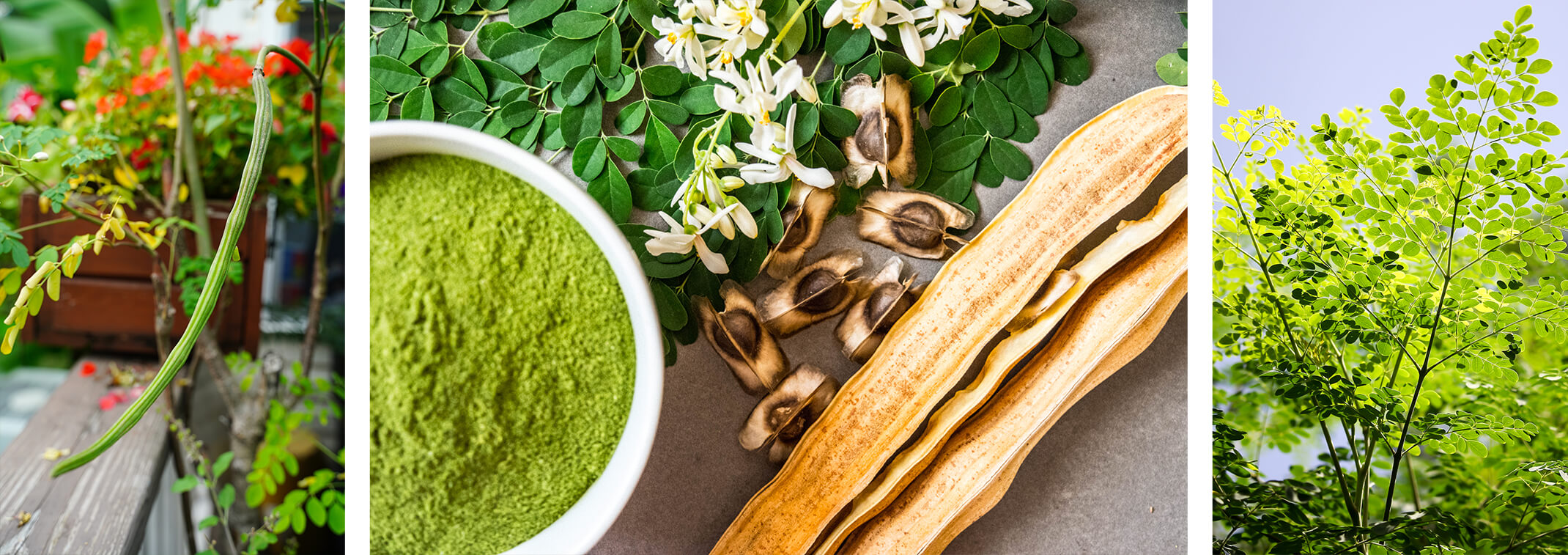
The Amazing Edible Moringa Tree! Who Knew?
Some call the Moringa tree the “Tree of Life” because of its incredible benefits to our livelihood and health. How can this be? Takepart cites that, “A paper published in the journal Current Protocols in Microbiology, Michael Lea of Safe Water International showed that Moringa seeds reduced muddiness in water by 80 to 99.5 percent and cut bacteria by as much as 99 percent.” Can you believe this plant can actually clean water?
Another incredible aspect of this fruit tree is that it can grow in less than ideal situations for plants and seeds. Permaculture Research Institute notes, “One of the biggest benefits of the Moringa tree is that it can be grown in extremely arid regions where rainfall is in limited supply. It also tolerates a wide range of soils and can be grown in regions ranging from old, depleted pasture land to lands bordering desertification.” This is fantastic news for those of us who live in the Valley of the Sun because we can reap the benefits of this remarkable tree in our own yards.
The shade from the Moringa tree can be beneficial to your vegetable garden when planted nearby (and positioned to help filter some of the sun's extreme heat). Speak with one of our Trusted Garden Advisors to learn more...
SummerWinds Nursery and Moringa Trees
Moringa Trees are available seasonally, while supplies last.
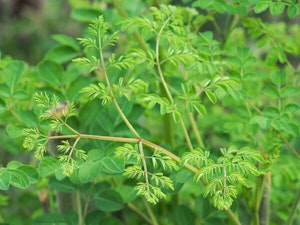 What do our garden experts have to say about Moringa trees? Here are our best tips to grow these plants locally:
What do our garden experts have to say about Moringa trees? Here are our best tips to grow these plants locally:
- New Moringa starts need warm summer nights to thrive so new seedlings will have to be kept consistently above 60 degrees. The simplest way to accomplish this is to bring them inside every night and put them back out every day until you are comfortable with the forecast.
- You can also direct-sow seeds in your sunniest, warmest spot when nighttime temperatures consistently stay above 60 or more degrees and there is no risk of frost. The last average frost date in Maricopa County is February 7th, but the latest recorded frost was on March 31st in 1987, so while the window is wide, it would be very unusual to have frost that late in March.
- Containers are not a good solution for Moringa long-term unless you want to treat it like an annual. Moringa seedlings have a very aggressive tap root that can be easily damaged, which means they need to be kept in a large enough pot so that the tap root does not curl around the bottom. To avoid this from happening we highly recommend you plant your Moringa in the ground as soon as the weather warms up.
- Moringa trees can grow up to 18 feet in less than six months, making it hard to harvest leaves and seed pods. If you “top” your tree at a height you are comfortable with, the tree will develop a lush bush-like habit in the warm weather months.
- Young Moringa trees will die back to the ground in cold weather. Typically, the tree will re-grow the following spring when overnight low temperatures rise above 60 degrees. After four of five years, healthy Moringa trees will become more frost-hardy and less prone to dying back.
How to Grow Your Own Moringa Tree
There are many ways to grow your own Moringa tree so you can experience their benefits too. Here are a few different ways to harvest your own tree as detailed by Trees for Life:
 Growing Moringa Trees from a Cutting:
Growing Moringa Trees from a Cutting:
After the trees have stopped producing fruits each year, branches need to be cut off so that fresh growth may take place. These branches are excellent for growing new trees.
- Make a cutting at least one inch (2.5 centimeters) in diameter and at least six feet (1.8 meters) long.
- Dig a hole three feet (one meter) x three feet (one meter) and three feet (one meter) deep.
- Place the cutting in this hole and fill it with a mixture of soil, sand and composted manure. Pack firmly around base of the cutting. Form a slight dome or cone shape, sloping down away from the cutting.
- Water generously, but do not drown the cutting in water. It is best if the water doesn’t touch the stem of the new tree.
Growing Moringa Trees from a Seed in the Ground:
Moringa seeds have no dormancy periods and can be planted as soon as they are mature, but remember not to plant them during colder months when the temperature will drop below 60 degrees.
Plant the seeds directly where you’d like the tree to grow long-term; the immature seedlings are delicate and often cannot survive transplanting.
To plant seeds directly in the ground:
- Choose an area with light and sandy soil, not heavy with clay or waterlogged.
- Dig holes one foot (30 centimeters) square and one foot deep. Back-fill the holes with loose soil. Compost or manure will help the tree grow better, even though Moringa trees can grow in poor soils.
- Plant three to five seeds in each hole, two inches (five centimeters) apart. Plant the seeds no deeper than three times the width of the seed (approximately ½ in. or 1.5 centimeters -- the size of one's thumbnail).
- Keep the soil moist enough so that the top soil will not dry and choke the emerging saplings, but also make sure it doesn’t get too wet or else the seeds can drown and rot.
- When the saplings are four to six inches tall, keep the healthiest sapling in the ground and remove the rest. Termites and nematodes can kill a young sapling, so take measures to protect them from these two dangers.
Note: If your soil is heavy, dig a larger hole of up to three feet (90 centimeters) in diameter and three feet deep, and backfill with one part sand and two parts original soil; added compost or manure will help.
Growing a Moringa Tree from Transplanting:
Make sure the ground where the Moringa trees are to be planted is light and sandy, not heavy with clay or waterlogged. Dig a hole one foot (30 centimeters) square and one foot deep then backfill with loose soil; adding compost or manure will help the trees grow better.
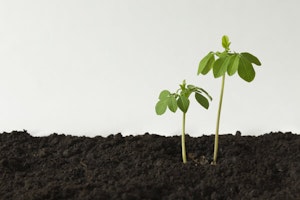 Water the planting holes one day before transplanting the seedlings.
Water the planting holes one day before transplanting the seedlings.- Plant seedlings in the late afternoon to avoid the hot sun on the first day.
- Make a hole in the pit to accept all soil in the bag. Carefully cut open the sack and place the seedling in the planting hole. Be careful to keep the soil around the seedling's roots intact.
- Pack soil around the seedlings’ base.
- Water only lightly for the first few days.
If the seedlings fall over, tie them to a stick for support and protect young saplings from termites and nematodes.
Health Benefits of the Moringa Tree
Along with cleaning water, the Moringa tree itself has numerous health benefits. How can this tree impact your life? Here are nine nutritional examples from Moringa of Life:
-
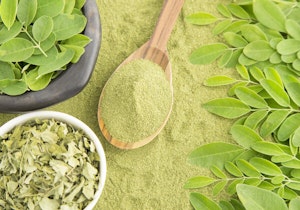 One half cup of cooked leaves will meet your daily recommendation for Vitamins A and C
One half cup of cooked leaves will meet your daily recommendation for Vitamins A and C - One half cup of pods (raw) will supply your Vitamin C requirement for a day
- One ounce of raw leaves contains the recommended daily amount of Vitamin C
- Ounce for ounce, the leaves contains six to seven times the amount of Vitamin C in orange juice
- Moringa leaves contain three to five times more beta-carotene than carrots
- Three ounces of Moringa powder contains more than 10 times the recommended daily amount of Vitamin E
- Ounce per ounce, Moringa leaves contain more than three times the iron as found in spinach or roast beef
- Moringa leaves contain three times the amount of potassium as bananas
- Ounce per ounce, Moringa leaves contain four times the amount of calcium found in milk
How to Cook with Moringa
Get the most from your Moringa tree by making a delicious side with it. Here is a Moringa Leaves Curry recipe from Superfoodify that may become your new favorite dish:
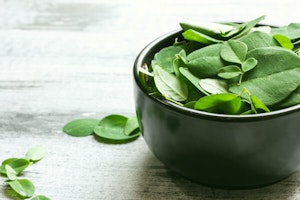 What you need:
What you need:
- 280 grams/bunch Moringa Leaves
- 1/3 cup Moong Dal (Mung Beans)
- 1/4 tsp Turmeric Powder
- 2 tsp Coconut Oil
- 1/2 tsp Mustard Seeds
- 1/2 tsp Urad Dal (split black gram)
- 1-2 Red Chilies
- 1/2 tsp Cumin Seeds
- Salt and Pepper to taste
- Lemon Juice to taste
Directions:
- Soak the moong dal in some water overnight, or at least one to two hours. This step is optional, but soaking aids digestion and reduces the cooking time significantly. However, if you are short on time you can start cooking immediately without soaking as well.
- Drain and add moong dal to a saucepan. Add about a cup of water as well as the turmeric.
- Cook over medium to high flame, allowing it to boil and cook until just soft but not mushy.
- If you have soaked the beans, then check them around the six to eight-minute mark. Take a cooked moong dal and press it with your fingers; it should be soft enough to press easily.
- At this stage, remove the cooked moong dal from flame and drain. Retain any water left over.
- Chop the Moringa leaves - a rough chop is fine!
- Heat oil in a pan and add mustard seeds. When the mustard seeds sputter, add split urad dal and broken red chilies, and fry them till the dal turns golden brown and add cumin.
- Add the chopped leaves along with and salt and mix well.
- Add about 1/2 cup of retained dal water (otherwise just use water) and allow the leaves to cook completely. The leaves will cook quickly, but will not become mushy or slimy.
- Lower the heat and add the cooked dal.
- Mix well and season with additional salt and lots of pepper powder as needed.
- Stir to combine, turn off the flame and squeeze some fresh lemon juice to taste.
Enjoying Your Own Tree of Life
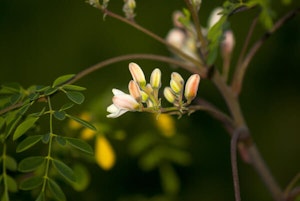 The Moringa could be one of the most diverse, unique and precious trees we can grow; it has a positive influence on everything from clean water to our health. We love this tree!
The Moringa could be one of the most diverse, unique and precious trees we can grow; it has a positive influence on everything from clean water to our health. We love this tree!
Reach out to your local SummerWinds Nursery over the next couple of weeks to find out when these incredible trees will be ready for you to buy. In the meantime, start thinking about where you’ll plant one in your yard!
Note: Our blogs are written specifically for Arizona—and the valley, when possible. If you live outside of Arizona, we encourage you to check the invasive species list for the state in which you live before planting a Moringa tree, as it is considered invasive in some other states and ecosystems.

